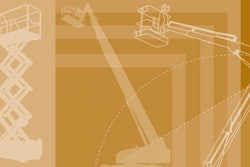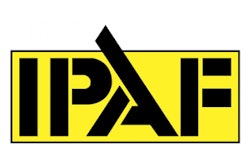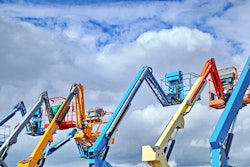
Falls from the platform, electrocution and platform overturns are the most common type of incidents leading to serious injuries and deaths over the past 10 years, according to the latest Global Safety Report, compiled by the International Powered Access Federation (IPAF) from an analysis of anonymized data collected via IPAF’s Accident Reporting Portal.
Launched via a webinar in June, the IPAF Global Safety Report 2022 analyzes the latest data collected via the IPAF portal, covering the period 2012-21 and comparing year-over-year and three-year trends to identify how well the industry is doing in tackling the key causes of accidents involving powered access.
Data from the whole 2012-21 range indicates 4,374 reports, including 4,462 lost-time incidents and 585 fatalities. Reports were gathered from 41 countries across the 10-year period.
Following falls from the platform, electrocutions and overturns are entrapment, mobile elevating work platform (MEWP) inoperable mechanical/technical issues and being hit by a vehicle or machine.
Reports by country
Looking at just 2021, there were 603 reports from 28 countries, with 628 people involved, resulting in 109 fatalities. This is a reduction on the number of fatalities during 2020, when there were 126. The country that submitted the most reports in 2021 was the U.K., accounting for 60.8 percent of reports received. The U.S. submitted 18.7 percent of the reports and the Republic of Korea 4.9 percent. The sector from which most incidents were reported was the powered access rental industry with 43 percent, followed by construction at 29 percent.
It is encouraging that more than 40 countries are now reporting to IPAF, but it is always worth bearing in mind the relative fleet size of MEWPs in each country and number of hours worked at height using powered access. The U.S. and China are among the two largest in terms of total fleet size; yet, comparing the levels of reporting in each, it is clear that there must be many incidents going unreported in the latter.
IPAF continues to work to increase reporting from all countries, sectors and users of powered access and hopes the introduction of the ePAL app for mobile devices, upcoming dashboards for reporting companies and new country dashboards can help drive change and give IPAF’s respective country and regional councils additional insight to encourage and perhaps one day mandate members to report.
“In addition to a focus on falls from the platform, which was the No. 1 cause of serious injuries and deaths over this period, we have also used the report to highlight some of the specific trends identified when conducting rental activity: delivery, collection, loading and unloading MEWPs, maneuvers in depots, demonstrations on-site, cleaning and maintenance of machines," says Brian Parker, IPAF head of safety & technical. “Given what the data is telling us, reducing falls from the platform is the key priority of IPAF’s Don’t Fall For It! global safety campaign this year. We hope this can make a measurable impact in terms of driving down these incidents. Also, by highlighting the risks and incidents associated with rental activity, we hope this will assist in making those activities safer, giving something back to our members in the rental industry.”
Reports by machine category
Looking at 2021 data, reports by machine category show mobile boom-type MEWPs (3b) were the most common type of equipment involved in incidents, accounting for 29 percent of reports. Then came mobile vertical-type (3a) machines at just under a quarter of reports (23.7 percent), followed by static boom-type (1b) MEWPs on 21.5 percent.
"What this report shows is that we need to challenge ourselves as an industry: Is there more we could be doing to reduce these numbers? We hope that powered access stakeholders around the world read the report to understand the key trends and benchmark their own safety programs. By working collaboratively, the industry can continue to develop solutions to the most pressing safety issues identified in the report," says Peter Douglas, CEO & managing director of IPAF. “We need to see more reporting from across all sectors of our industry and from as many countries as possible, not least via the ePAL app that provides quick and easy on-the-spot incident reporting. We hope this empowers operators to report all accidents, as well as minor and near-miss incidents, which often go under-reported.”
Mark Keily, QHSE director at Sunbelt Rentals and chair of IPAF’s International Safety Committee (ISC), which helps to verify and analyze the anonymized incident reports and to produce the Global Safety Report each year, adds: “While numbers going up can be a result of better reporting, it is still a concern to note that the main causes of serious injury and death when using powered access machines haven’t changed much in the past 10 years. The IPAF Global Safety Report is never going to have all the answers that our industry requires, but it does clearly set out key areas of concern that should then allow industry stakeholders to review their own working practices to ensure they have adequate control measures in place.”
● To view and download the IPAF Global Safety Report 2022, visit www.ipaf.org/accident; a recording of the launch webinar is available on IPAF’s YouTube channel.
Electrocutions: A major concern for the US & Canada
Worldwide, the No. 1 cause of deaths and major injuries remains falls from the platform, with electrocutions a close second. From the data IPAF has received over the past 10 years, the U.S. (83 percent) and Canada (4 percent) account for almost 90 percent of all electrocution incidents, which are nearly always fatal.
Up until 2016, there were relatively few reports of electrocutions; since then, IPAF has started to receive more accurate information on the number of electrocutions in the industry, but there is a suspicion near misses are heavily under-reported, perhaps because operators and supervisors may in fact not know what an electrocution near-miss actually looks like.
The most likely locations in which to be fatally injured are public areas or alongside roads. Commercial premises also show a number of electrocutions, while fatalities have also happened on construction sites, in workshops and yards (rental depot locations). Though the majority of electrocutions involve contact with an overhead power line, electrocutions have also been reported in workshops with overhead cranes and live buzz bars. Static boom or 1b type vehicles are the most common type of MEWP involved in electrocutions; almost 50 percent of all fatalities and major injuries involve this type of equipment. Just under one-third (30 percent) of fatalities occurred on mobile boom or 3b type MEWPs. These machines are able to be driven while elevated, so additional care must be taken in case that brings the machine and operator into proximity with overhead lines.
From Jan. 1 2019 to Dec. 31 2021, there were 103 fatalities, two major injuries and five minor injuries involving electrocution. Across 2021, 27 people lost their lives to electrocution involving MEWPs; this is an increase on the previous year when there were 21 fatalities. In 2021, there were 23 reports from five countries.



















